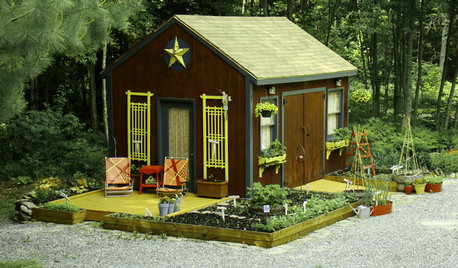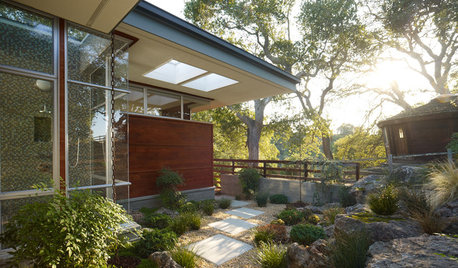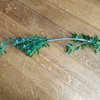Armadillo digging up my beds!
april_wine
11 years ago
Related Stories

GARDENING AND LANDSCAPINGDig This Garden Shed Makeover for Less Than $300
New paint, accessories and raised vegetable beds turn a drab outpost into a colorful charmer
Full Story
REMODELING GUIDESHow to Dig Down for Extra Living Space
No room for a ground-level addition? See if a finished basement is a good idea for you
Full Story
GARDENING GUIDESGarden Myths to Debunk as You Dig This Fall and Rest Over Winter
Termites hate wood mulch, don’t amend soil for trees, avoid gravel in planters — and more nuggets of garden wisdom
Full Story
DECORATING GUIDESThe '70s Are Back. Can Ya Dig It?
No need to cringe. These 21 groovy blasts from the past are updated to look fabulous today
Full Story
DECORATING GUIDESSimple Pleasures: Digging in the Attic
Sift through forgotten things to bring back memories and inspire stories — and maybe even yield a treasure or two
Full Story
HOUZZ TOURSMy Houzz: Brooklynites Take Up a Rural 1940s Farmhouse
A city-dwelling family plants new roots in upstate New York, remodeling their digs with cheerful, colorful touches
Full Story
LANDSCAPE DESIGNSoak It Up: How to Manage Stormwater in Your Landscape
Permeable paving, gravel beds and planted areas in your yard can absorb and cleanse stormwater runoff. Here's how it works
Full Story
FEEL-GOOD HOMEEasy Ways to Spruce Up Your Summer Vacation Rental
If your rented cabin, cottage or beach shack isn’t up to par, fear not. A few tweaks can make it more comfortable
Full Story
REMODELING GUIDESMovin’ On Up: What to Consider With a Second-Story Addition
Learn how an extra story will change your house and its systems to avoid headaches and extra costs down the road
Full Story
DECORATING GUIDESUp the Luck in Your Home
No need to pillage the garden for shamrocks. These 10 good-luck totems and décor options may work like a charm
Full Story






ken_adrian Adrian MI cold Z5
april_wineOriginal Author
Related Professionals
West Milford Landscape Architects & Landscape Designers · Kyle Landscape Architects & Landscape Designers · Finneytown Landscape Architects & Landscape Designers · Blue Springs Landscape Contractors · Centereach Landscape Contractors · Damascus Landscape Contractors · Estelle Landscape Contractors · Fort Hunt Landscape Contractors · Matteson Landscape Contractors · Mendota Heights Landscape Contractors · North Chicago Landscape Contractors · Oviedo Landscape Contractors · Smyrna Landscape Contractors · Waipahu Landscape Contractors · Waldorf Landscape Contractorsken_adrian Adrian MI cold Z5
corunum z6 CT
mistascott
rhizo_1 (North AL) zone 7